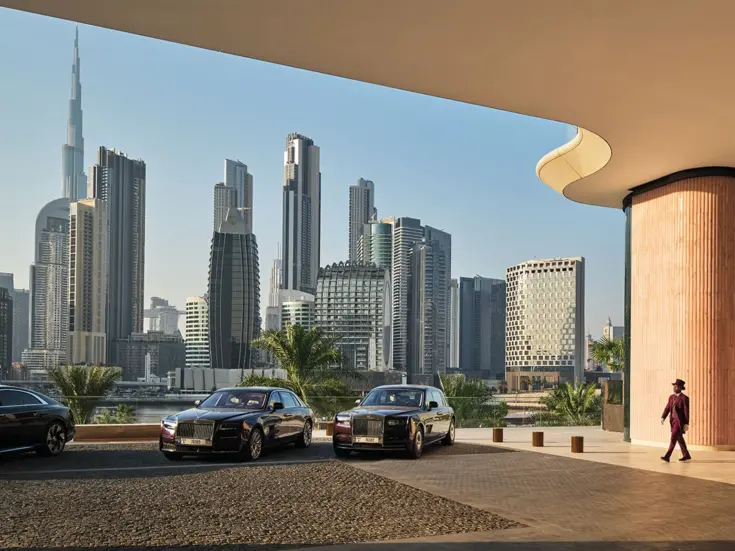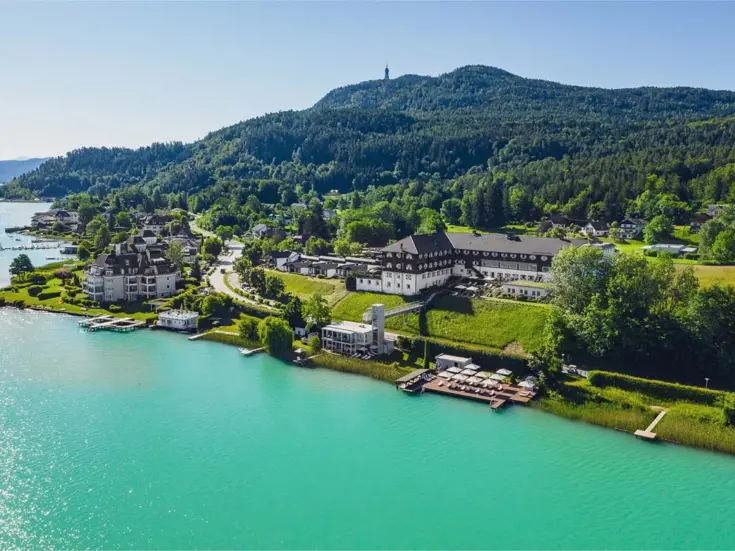Vienna’s Ringstrasse ’ a circuit of palaces ’ remains a sight to behold. Jo Caird explores the architectural legacy of the Emperor Franz Joseph and the Jewish families of the city’s golden age
I had people suddenly standing in my room. Someone came in with a bright American accent, asking, “What was this room?” I said, “It’s none of your business what it was, and would you please leave my office!”‘
Ivo Deskovic, a founding partner at Vienna law firm Benn-Ibler Rechtsanw’lte, has had to get used to strangers wandering into his workplace. In 2010, a month after he and his partners moved into their new offices on the first and second floors of a grand 19th-century mansion on the north-west corner of the city’s Ringstrasse, the British ceramicist Edmund de Waal published his family memoir, The Hare with Amber Eyes.
The Palais Ephrussi, built by de Waal’s ancestors and now home to the lawyers of Benn-Ibler Rechtsanw’lte, has been a stop on the Vienna tourist trail ever since. This year, with the Austrian capital celebrating the 150th anniversary of the Ringstrasse, the palace is likely to be the subject of more attention than ever.
It was the creation of this monumental circular boulevard that allowed the Ephrussis and other Jewish families like them – wealthy from banking, industry and the railways – to assert their place fully in Viennese society. Granted the right to own property just as Emperor Franz Joseph’s spectacular Ringstrasse project was taking shape, members of the city’s Jewish elite snapped up some of the new boulevard’s grandest and most expensive private plots.
Not that tourists are actually allowed into the Palais Ephrussi. Deskovic used to offer tours but stopped for fear of disturbing the day-to-day life of the firm. He and his colleagues can’t prevent literary pilgrims strolling into the building’s courtyard, but Deskovic’s office and the other rooms once occupied by Ignace, Victor and Elizabeth von Ephrussi are these days out of bounds to the public.
Fortunately, this remarkable building is not the only survivor of this rich period in Vienna’s architectural and social history. For Franz Joseph, selling land on the Ringstrasse off to private individuals was an efficient way of raising cash for showpiece buildings such as the State Opera (then the Court Opera), the Art History Museum and the Parliament. While Ignace von Ephrussi built his palace across the square from where the towers of the neo-gothic Votivkirche were rising, fellow banker Gustav Ritter von Epstein bought a prominent corner plot next to the planned Parliament.
Approaching Palais Epstein today, it’s hard to get a sense of what it would have been like here when the city’s medieval fortifications and the wide circle of protected land that once surrounded them were still in place. The new boulevard opened things up in an unprecedented way and in the decade following the demolition of the city walls, Vienna’s population increased by 30 per cent, reflecting the growing might of what in 1867 would become the Austro-Hungarian Empire.
A group of schoolchildren are taking part in a democracy workshop on the morning of my visit to the Palais Epstein. The building is leased to the Parliament, which also runs guided tours of the palace’s beautifully restored bel ’tage – the grand first-floor suite where the Epsteins lived and entertained on a lavish scale.
We ascend by a staircase that accesses only this floor – the rest of the building, which was rented out by the Epsteins as residential and commercial premises, is reached by more modest routes. The walls of the staircase are covered with what looks like a rainbow of marble. It’s not all genuine: some was imported from Verona, but the rest is a type of highly polished fresco painting known as stucco lustro. The imitation is so good, however, that I can’t spot the difference even after having it pointed out, and am fooled again by the ersatz walnut ceiling of the reception hall.
A devoted Italophile and art lover, Epstein hired Theophil von Hansen, one of the most prolific architects of the Ringstrasse project, to create a home that was an artwork in its own right. Paintings by Christian Griepenkerl (who, many years later, rejected the young Adolf Hitler’s application to study at the Vienna Academy of Fine Arts) decorate the ceiling of the ballroom where guests at Emilie von Epstein’s splendid musical salons once chattered and danced. A copy of an early-19th-century relief frieze by the Danish sculptor Bertel Thorvaldsen (the original can be seen in the Palazzo del Quirinale in Rome) adorns the winter garden, and the coffered ceiling in the smoking room is modelled on the vaults of the church of Santa Maria dei Miracoli in Venice.
Vienna’s wealthy Jewish families were also public patrons of the arts, donating considerable sums to support the building of some of the earliest arts institutions on the Ringstrasse. Designed by Hansen and opened in 1870, the Musikverein concert hall shares many architectural and decorative tropes with the private mansions of the period — but on an absurdly opulent scale.
I buy a ticket to hear the Vienna Philharmonic perform a programme of Strauss, Elgar and Haydn. The gilded caryatids, marble busts and allegorical ceiling paintings of the jewellery box-like interior make the concert as thrilling an experience for the eyes as it is for the ears. I float back to my hotel at the end of the fifteen-minute standing ovation, my senses awash with beauty.
Over the following days I make flying visits to other illustrious Ringstrasse institutions that owe their existence to the generosity of the city’s 19th-century Jewish residents: the Natural History Museum, the Art History Museum, the K’nstlerhaus. Also on the list is the Jewish Museum: built on the Ringstrasse in 1895 at the behest of several wealthy Jewish families but shut down by the Nazis in 1938, it only reopened at its current location in the inner city in 1993. The excellent permanent exhibition tells the story of Jewish society in Vienna: from the middle ages, when Jews first came to the city; through the period of ‘tolerance’, where wealthy members of the community could pay for rights and protections; to the devastation wrought by the Anschluss.
Then there’s the exhibition Ringstrasse: A Jewish Boulevard, which opens at the museum on 25 March. As well as exploring the experiences of old, assimilated families like the Epsteins, the show will consider the fate of Vienna’s working-class Jewish community and the impact of growing anti-Semitism in the period. The Ringstrasse era mansions and cultural institutions we see today conjure images of charmed lives in elegant environs, but with Jews making up nearly 10 per cent of the city’s population by 1900, of course there was far more to late-19th-century Viennese Jewish life than that.
The exhibition will also touch on what has happened since. Thanks to The Hare with Amber Eyes, many are now familiar with the story of the Palais Ephrussi: how it was requisitioned by the Nazis, its contents sold, its owners forced to flee. But other tales are yet to be told: from the contribution Viennese Jews made to a city asserting itself on the world stage to the threats they faced during the Holocaust to the community’s ongoing attempts to seek restitution. With the Austrian government having only officially acknowledged and apologised for its role in the Holocaust in 1991, these topics are still rarely discussed, and there’s much yet to learn.
It’s the final morning of my stay in Vienna and I’m squeezing in one more mansion. Eduard von Todesco was one of the first Jewish industrialists to build on the Ring (or, to be more accurate, just off it) and his magnificent palace was completed in 1864. Run as a luxury events space by the catering company Gerstner, the bel ’tage – another Hansen masterpiece – glimmers like a miniature Musikverein.
I glance out the window of what was once the dining room to find my gaze entirely filled by the State Opera across the road. My guide pauses in her patter and for the briefest of moments I’m transported back to the Ringstrasse era, a guest at one of Sophie von Todesco’s sumptuous salons. It’s a charming place to be.








